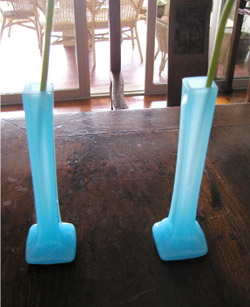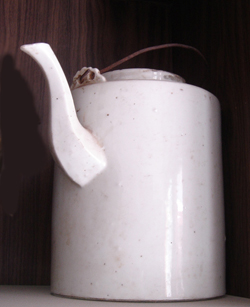Moving to a table, one would find objects suffused in light, or with matte surfaces. Sharp reflections – like those of European polished silver - are rare. In the 1930’s the Japanese novelist Jun-ichiro TANIZAKI spoke of Chinese glass as being a kind of artificial jade that held light under a semi-opaque surface, distinguishing it from European glass with its developmental trajectory towards crisp transparency. To calibrate the senses, the personal and domestic environment has shapes and surfaces that are simple, clear, firm and yet subtly active or mildly dynamic. The massive round cylinder of a teapot contrasts with its faceted and sinuous spout and a delicate top with its thin metal handle. There is dynamism here, but also firmness and reassurance, amplified by the dull white of the glaze. Forms finish dexterously, inviting fine observation and encouraging care. | | 

| 

|